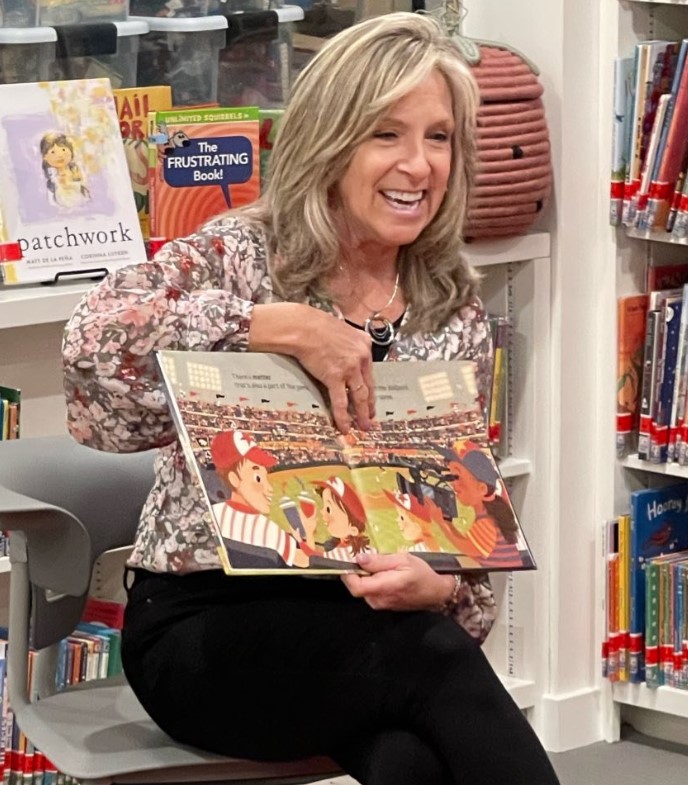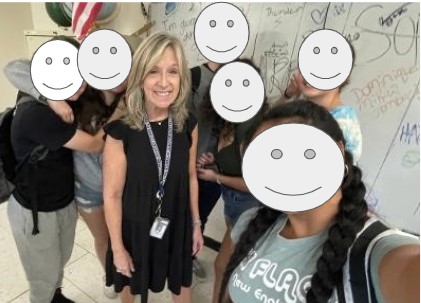From Teaching to Writing

TeachingBooks asks each author or illustrator to reflect on their journey from teaching to writing. Enjoy the following from Catherine Ciocchi.
Engagement Can Be Easy
by Catherine Ciocchi
Hook them with what they know.
Engagement and participation are always easy when you share common knowledge. Interest peaks when things look or sound familiar. It’s comfortable, unlike the strange or unusual, which can bring on an uneasy disconnect due to misunderstanding. This is what teachers should consider each day. We convey assigned content to our learners. Creativity comes with how to deliver it. I wrote the picture books, Science, Matter and the Baseball Park (Gnome Road, 2023) and This Land is your Land (Arbordale, 2015), using what kids already know, while weaving in new concepts. My recent book introduces the three states of matter at a baseball game and my first book introduces landforms, showing children doing familiar outdoor activities.
Rhyming

For some reason, my go to is rhyme. When I was a beginning writer, all I heard was “most editors don’t like rhyme.” What? Why? I think it’s fun to read aloud as well as listen to. Then I learned it’s the “bad” rhyme they don’t like. Oh, okay, so I’ll just write “good” rhyme. As any rhyming writer knows, this is a monumental task. There is nothing fast and easy about writing good rhyme. Both rhyme and familiar references are contributing elements I use to keep my students engaged. I’ve implemented “Rhyme Time” when I’m introducing or summarizing concepts. Students are given a nonfiction rhyming piece which I wrote, with the rhyming words missing. Their job is to fill in the blanks. There are lots of laughs when we do this.
Simple explanations lead to ideas for picture books.
When I share my picture books with my high school earth science students, it’s merely to prove that perseverance pays off and you can accomplish your goals. Getting published was a goal of mine for many years. My books are obviously too young for them. But, while I read my books to them, their attention is uninterrupted. They listen and enjoy looking at the pictures. I remind them that the big ideas we learn in our high school class are also core science ideas taught in the younger grades. The same concepts are being introduced, but on a much less sophisticated scale. When I need to simplify or help my students understand science concepts, my teaching strategies include elementary explanations with drawings. This is where my ideas for picture books come from.
Real stories about real science

It’s important to encourage inquiry instead of just telling students everything. I use readings on real-life events which unfortunately include devastating disasters due to our active earth. Earthquakes, tsunamis, wildfires, sink holes, hurricanes, and tornadoes are some examples. Nature’s impact on human life is spread throughout our topics. I’ve begun a lesson showing professional basketball highlights because one player has tattoos representing his survival during hurricane Katrina. In keeping with stories my students can relate to, we’ve read about a California high school football team whose town was destroyed by wildfire and how they overcame this by practicing an hour away and went on to win a championship. We read about the Midwest “children’s blizzard” of 1888 when little ones were joined on a rope line and brought to safety in their teacher’s home miles away. We’ve read about a New Jersey high school soccer player who survived a lightning strike. To introduce topography, we read about an Arizona family whose airplane crashed in the superstition mountains on Thanksgiving Day. A sink hole swallowing corvettes in Kentucky, a teenage girl races cars on the Bonneville Salt flats. I research stories for every unit of study to show earth science is real life.
Bringing real life science to younger readers
My books Science, Matter and the Baseball Park and This Land is Your Land nicely supplement curriculum but are also beautiful picture books for any reader. I will continue to write manuscripts that hold a sneaky teaching element but also let the readers see themselves on the pages. They see themselves snorkeling around an archipelago, sledding down a hill or having a blast at a baseball game while enjoying all the matter around them. It’s all science.
Books and Resources

TeachingBooks personalizes connections to books and authors. Enjoy the following on Catherine Ciocchi and the books she’s created.
Listen to Catherine Ciocchi talking with TeachingBooks about the backstory for writing Science, Matter and the Baseball Park. You can click the player below or experience the recording on TeachingBooks, where you can read along as you listen, and also translate the text to another language.
- Listen to Catherine Ciocchi pronounce her name
- Discover Catherine Ciocchi’s page and books on TeachingBooks
- Visit Catherine Ciocchi on her website, Twitter, Instagram, Facebook, and Goodreads.
Explore all of the For Teachers, By Teachers blog posts.
Special thanks to Catherine Ciocchi and Simon & Schuster for their support of this post. All text and images are courtesy of Catherine Ciocchi and Simon & Schuster, and may not be used without expressed written consent.



Leave a Reply